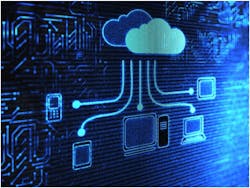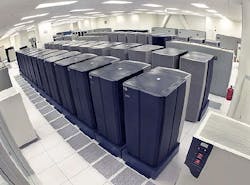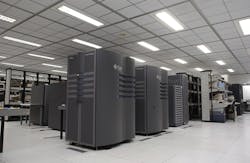Paper logbooks will soon transform into electronic records by federal mandate; freight bills largely get passed from computer to smart phone to tablet, not hand-to-hand anymore; and of course trucks themselves are beginning to become “self-directed” with the power to activate their brakes all on their own based on radar images and other data streams.
That’s the long view of how information technology (IT) is changing how we move cargo from point A to point B both within the U.S. and around the world.
On the front lines of this broad wave of IT change, though, motor carriers are faced with a far more blunt decision: weighing the need to invest in new software systems against the need to conserve cold hard cash – for trucks today aren’t cheap to buy, nor to maintain.
Bill Todd, business development manager at logistics software developer WiseTech Global, recently shared a few thoughts on how to successfully maintain the “balancing act” required when companies consider investing in new IT systems.
And though his focus is upon the needs of freight forwarders and customs brokers, trucking companies can learn a thing or two from Todd’s perspective.“You probably know you need to move from paper-based or aging systems for your business to survive and thrive in the future,” he explained.
“Whether they’re major disasters, persistent client pressures, or even organizational changes within your business, forces inside or outside your business may be all it takes to move you toward change,” Todd (at right) emphasized. “More often than not, though, the ‘tipping points’ are simply realizations you make about all the good change can bring your business.”
That includes how such change can impact the “human resources” involved in the business of logistics as well, he stressed.
To that end, here are five thoughts from Todd on how companies should view the strategic and tactical effects of IT investments:
The Staff You Have Now Won’t Cost You Extra Later: In the labor-intensive logistics sector, three-quarters of monthly costs are employee related. Usually, when staff hear rumors of new systems in development they get nervous about holding onto their jobs. That’s when they need reassurance that the goal is simply to handle more “throughput” and dramatically improve the bottom line, all while keeping the same head count.
From a company’s perspective, then, investing in IT should be about holding onto talent: the valued people who hold your corporate knowledge, in whom you’ve invested.
“For example, within an average customs house broker, each person handles about 50 brokerage files per month,” Todd said.
“Let’s say winning a new import account comes with 100 extra files and the need to hire one to two additional employees to handle the workload. The cost of these new hires could take about 70% of the revenue derived from the expanded file count,” he explained. “Yet with an automated process in place, you will need only a part-time position, or even cover the jobs with existing staff – ultimately increasing the profitability of new business dramatically.”A Lower-Maintenance System Won’t Cut IT Resources, Just Refocus Them: In larger organizations, the IT department typically responsible for building and maintaining aging applications naturally looks to protect its turf. But that’s a slanted perception, stressed Todd.
“What it really means is corporate knowledge can be redistributed, allowing the IT team to focus on the dynamic and increasing needs of end clients – on the evolving EDI [electronic data interchange] requirements and customer interfaces that secure their loyalty – rather than internal hardware issues,” he pointed out.
What Clients Demand Can Overwhelm What You Can Supply: Many organizations are being pushed to the “tipping point” of IT change, Todd believes, by clients who want to be provided with more information. “Clients aren’t asking any more whether you can do the work. What determines whether they select you as their freight forwarder or broker is the level of visibility they’ll have into their shipments, your reporting capabilities and the responsiveness of self-service features,” he explained. “It also has an impact on whether you keep them when contract reviews come around.”
From that perspective, by investing in the latest IT systems, brokers and motor carriers alike can better “customize” service offerings without cutting into profitability.
“Whether they [customers] want self-service or personal contact, all the accurate data is readily available, delivered at the press of a button or automatically scheduled,” Todd said.You Can’t Manage What You Can’t See: Todd also thinks the logistics industry as a whole needs better “internal reporting” to manage the business and the cost and to study the KPIs [key performance indicators] and how they compare with the industry.
“Simply boosting your day-to-day efficiency – gained through visibility across your operations and electronic automation – is a good reason to adapt to something new,” he emphasized. “Migrating to a new software solution has enabled freight forwarders and customs brokers the ability to process more files per month per person than ever before.”
Keeping Pace with Compliance … Or Falling Behind: Shifting government regulations can also be a compelling reason for change, Todd noted; something trucking companies know all too well.
One example is the Automated Commercial Environment (ACE) promulgated by the U.S. Customs & Border Protection [CBP] agency, which he thinks has really tipped freight companies toward installing new IT solutions in the U.S.
“Having electronic automation is one of the most prevalent reasons for change I hear from customs brokers,” he added.
They key thing in all this IT strategizing is to continually take into account customer requirements, Todd stressed. “If you cannot provide the automation they need, you can bet someone else will,” he warned. “Those [electronic reporting] requirements usually center on your ability to send and receive data, while providing robust reporting tools.”
And while many companies may hesitate at the edge of change – considering the merits of available technology, the benefits and drawbacks of change, and of course the costs – don’t forget to measure the consequences of inaction as well.
“If there truly are costs for doing nothing, simply spending some effort to consider them can be reason enough for changing your business for the better,” Todd said.
Something to consider as the freight world keeps digitizing at an ever more rapid pace.







